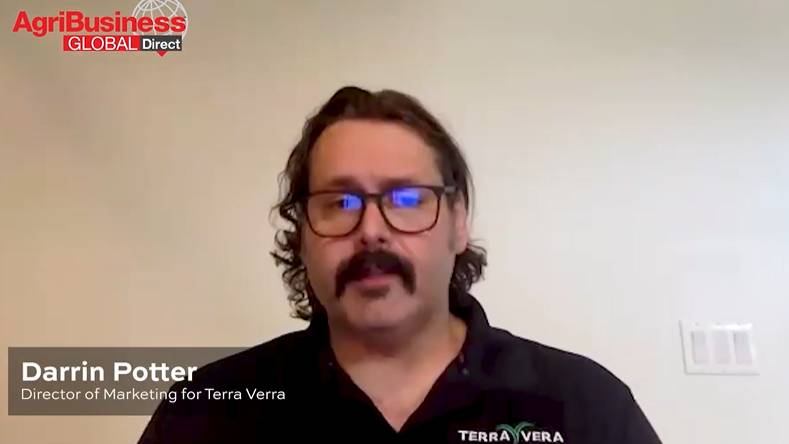Corteva Agriscience Set to Incorporate DuPont, Dow Groups
Editor’s note: This story first appeared in AgriBusiness Global’s May/June print magazine. We now also distribute the magazine digitally for added circulation and convenience. Preview the digital edition here.
Bringing together three separate businesses to create one company can have its challenging moments. But those challenges are somewhat lessened if the separate businesses share common traits, such as a strong heritage and culture.
As executives of Corteva Agriscience, Agriculture Division of DowDuPont, begin the final stretch to unite DuPont Crop Protection, DuPont Pioneer, and Dow AgroSciences under one name by June 1, a sense of similarity has helped move the process along.
“Although we’re different companies, we weren’t that different culturally and in the way we work with our supplier bases,” Craig Reed, CPSM, Chief Procurement Officer of Corteva Agriscience, says. “This has allowed us to move faster to get things done in support of the new company.”
The merger will create a standalone agriculture company with leading positions in seed technologies, crop protection, and digital agriculture.
For more than a year Reed and his team have worked to integrate two large legacy supply chains and network systems into one responsive and agile unit. The result, Reed says, is a company that will create more scale and more opportunities for its supplier base. “Two different companies meant two different strategies in terms of engaging and developing the supply base in support of [the separate] businesses,” he says. “We now bring the collective of those organizations together to create new relationships. It will give us a broader base for growth.”
The agility that Reed and his team envision for Corteva Agriscience will allow it to get crop inputs through the supply chain more quickly. A part of the integration process has been to examine the operating models of the two legacy supply chains to find ways to become more efficient and effective. “We’re designing our operations, networks, and strategy to enable Corteva Agriscience’s vision and operating model as a pure-play ag company,” Reed notes. “As a result of the merger, we can rethink what it means to operate in this space and how we serve our customers.”
The joining of two supply bases also means more R&D prospects for future crop input products. “We have a significant (R&D) pipeline within the companies today, and bringing together the supply bases will provide us with more opportunities,” Reed says.
As separate companies, there was competition to procure commodities and other goods and services. As one company, Corteva Agriscience will leverage its position to create economies of scale with its supplier network. “Suppliers will have more opportunities to work with us,” he says. “We’re getting the best of both worlds (with the merged company), and there will be plenty of potential growth for our supplier base.”
Naturally, suppliers were apprehensive when the merger was first announced (in February 2018). Part of the apprehension stems from consolidation occurring in the industry, Reed says. “The biggest question we’ve gotten from suppliers since the beginning is what the merger means for them,” he stresses. “They need to have an understanding of how our business was changing.”
In Corteva Agriscience’s discussions with suppliers, Reed says there was an emphasis on the new company looking at different, better, and novel ways to collaborate and drive value with the supplier base. Based on these discussions, Reed foresees a supplier base ready to work with Corteva Agriscience in areas that it did not do so previously with the legacy companies, or leverage business they did with one company but not the other.
“That seems to be the focus we’re seeing with suppliers,” Reed says. “There is not so much concern about two large companies coming together. Suppliers are looking more in the area of what the new company will bring to them as they look to continue to grow with us.”
The legacy companies are located in more than 180 countries around the world. So, Reed says there isn’t any particular region or country where there was challenge to integrate the supply chain.
“We have a very global supply base, and we’re buying from all over the world in support of our businesses,” Reed says. “We’ll have more scale with one company than we did as separate companies because we will have a bigger presence in areas where we did not in the past as individual companies.”
He points to the regions of Latin America, North America, and Asia-Pacific where Corteva could expand its presence. “Each (region) has different characteristics from a supplier perspective,” Reed says. “We will leverage each region in different ways.”
From a supply chain perspective, there will be a continued push for greater speed and more transparency, Reed says. “I think there is a need and desire to be more transparent in all aspects of the supply chain from the perspectives of cost, flow — where goods sit — and service,” he says. ‘We’re starting to see how we can better leverage the skill sets, technology, and expertise of our supply partners to support our overall business goals. This will translate itself into the way we work going forward.”






